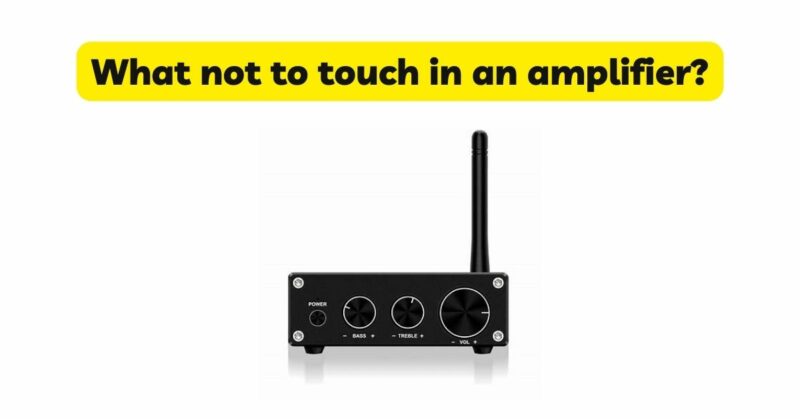Amplifiers are essential components of audio systems, designed to enhance and amplify sound signals. While they are built to deliver excellent performance and provide an enjoyable listening experience, it is crucial to understand what not to touch in an amplifier. Mishandling certain parts of an amplifier can not only compromise its performance but also pose safety hazards. In this article, we will explore the key components and areas of an amplifier that should be avoided and delve into the reasons behind them.
I. Power Supply Section: The power supply section of an amplifier is responsible for converting the input voltage to the required levels for operation. Within this section, there are specific elements that should be left untouched:
- Mains Power Input: The primary power input should never be tampered with unless you are a qualified professional. This area deals with potentially dangerous voltages, posing a significant risk of electrical shock or even fatal injury.
- Internal Power Capacitors: Amplifiers store electrical energy in large capacitors within the power supply section. These capacitors can retain a charge even after the amplifier is turned off. Touching these capacitors without proper knowledge and precautions can lead to severe electrical shock.
II. Circuit Board and Electronics: Amplifiers comprise complex circuit boards and delicate electronic components. Mishandling these parts can cause irreversible damage or affect the performance of the amplifier:
- Circuit Board Traces: The traces on the circuit board carry electrical signals and power throughout the amplifier. Scratching or tampering with these traces can disrupt the flow of electricity, resulting in circuit malfunctions or complete failure.
- Resistors, Capacitors, and Inductors: These components are crucial for regulating current, storing energy, and filtering signals within the amplifier. Applying excessive force or mishandling these components can lead to their damage, negatively impacting the amplifier’s performance.
- Integrated Circuits (ICs): ICs are the building blocks of an amplifier, responsible for signal processing and amplification. These delicate components can be easily damaged by static electricity or physical stress. Avoid touching the ICs directly, as the oils from your fingers can cause corrosion or affect their functionality.
III. Speaker Outputs: The speaker outputs are where the amplified signals are sent to power the speakers. Although they may appear harmless, certain precautions should be taken:
- Shorting Speaker Outputs: Accidentally shorting the speaker outputs by touching both positive and negative terminals together can result in significant damage to the amplifier’s output stage. It can also harm the connected speakers or cause a loud, unpleasant noise known as a “pop.”
- Connecting Live Wires: When connecting speakers to the amplifier, ensure that the power is turned off. Connecting live wires while the amplifier is powered can create an electrical surge that can damage the amplifier and potentially harm the individual making the connection.
IV. Heat Sinks and Ventilation: Amplifiers generate heat during operation, which needs to be dissipated efficiently. The following precautions should be observed:
- Heat Sinks: Heat sinks are metal components that help dissipate the heat generated by the amplifier’s power stages. These surfaces can become extremely hot during operation. To avoid burns or injuries, never touch the heat sinks while the amplifier is powered.
- Ventilation Openings: Amplifiers have specific ventilation openings designed to prevent overheating. It is essential to keep these openings unobstructed to ensure proper airflow. Avoid covering or blocking these vents, as it can lead to heat buildup and potentially damage the amplifier.
Conclusion: Understanding what not to touch in an amplifier is crucial for both ensuring personal safety and maintaining the optimal performance of the device. By avoiding contact with the power supply section, circuit board components, speaker outputs, and sensitive areas like heat sinks, users can prevent accidents, equipment damage, and compromised audio quality. Always consult the manufacturer’s manual and seek professional assistance when dealing with any uncertainties or technical difficulties. With proper care and knowledge, you can enjoy the benefits of your amplifier while keeping yourself and your equipment safe.


